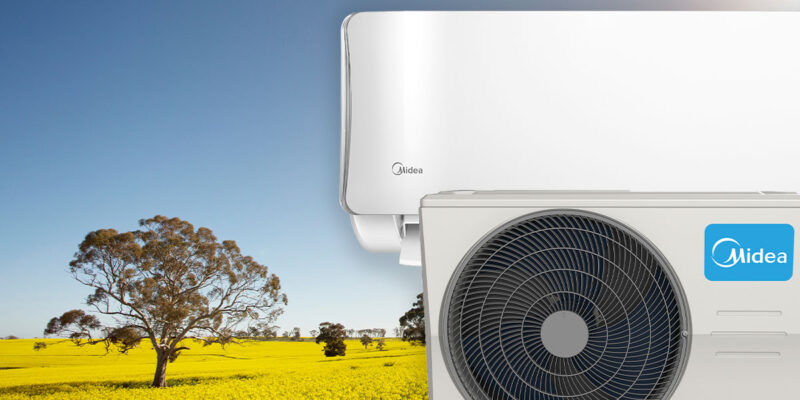In an era where temperatures are soaring, and climate concerns intensify, the conventional notion of air conditioning has transcended its luxury status to become an essential response to the relentless heat.
As we seek refuge in the cool embrace of wall-mounted air conditioning units, we find ourselves caught in a paradox—these very systems designed to offer respite from scorching summers inadvertently contribute to environmental challenges.
This prompts a crucial exploration into a transformative realm: the world of eco-friendly air conditioning systems, where innovation meets responsibility in the quest for a cooler, greener future.
Embracing Eco-Friendly Living
Adopting eco-friendly air conditioning systems requires more than just a technological shift; it necessitates a broader commitment to sustainable living. To truly reap the benefits of these systems, homeowners must be willing to embrace specific lifestyle changes within their living spaces. These changes are pivotal in ensuring that electricity bills do not evolve into monthly financial burdens, harmonising the dual goals of personal comfort and economic responsibility.
Navigating the Eco-Friendly Cooling Journey
Embarking on the journey towards eco-friendly cooling solutions requires a thoughtful and informed approach. It involves a holistic examination not only of the technological aspects but also of the day-to-day habits and practices within the home.
So, if you are seeking both a cooling refuge from the heat and a conscientious approach to resource consumption, stay with us as we delve deeper into the realm of eco-friendly air conditioning.
Together, we will explore the intricacies of these systems and the associated lifestyle adjustments, ensuring you make informed choices that align with your desire for comfort, financial prudence, and environmental stewardship.
The Evolution of Eco-Friendly Technologies
In our present world, the pursuit of a fully eco-friendly air conditioning system remains a work in progress.
While the ideal of achieving 100% sustainability in air conditioning technology is yet to be fully realised, some manufacturers are making strides by incorporating environmentally friendly solutions into the production of air conditioning systems. This shift is motivated by a dual commitment: to alleviate financial burdens for consumers while simultaneously contributing to a cleaner, more sustainable planet.
R32 Refrigerant: A Greener Choice
An exemplary illustration of this shift towards greener practices is the adoption of the R32 refrigerant such as in the Midea Apollo range of wall-split air conditioners. R32 is a refrigerant that is widely embraced for its balanced properties and has gained popularity in the market for compelling reasons. Beyond merely providing cool air, R32 stands out for its remarkable efficiency in heat transfer, resulting in a noteworthy reduction of approximately 10% in electrical consumption compared to air conditioning units utilising the R-22 refrigerant. Moreover, the significance of R32 extends to its environmental impact, specifically in terms of its Global Warming Potential (GWP). The GWP of R32 is one-third lower than that of many refrigerants commonly employed in the market today. This makes R32 a pivotal player in the movement towards more sustainable air conditioning solutions, aligning with the collective push for technologies that prioritise energy efficiency and environmental responsibility.
Smart Thermostats: Intelligent Climate Management
Moving beyond refrigerants, the quest for eco-friendly cooling involves holistic approaches, and one such avenue is the integration of smart thermostats into homes. Smart thermostats represent a leap forward in managing a home’s climate efficiently.
Smart thermostats are not just temperature-adjusting devices but intelligent systems that learn your schedule, optimising energy use when you’re away. Offering remote control capabilities via smartphones and providing detailed energy usage reports, these devices empower users to make informed decisions for enhanced energy savings.
Optimising Ventilation for Green Living
In the realm of home comfort, optimising ventilation becomes a crucial component of green air-conditioning. Fresh air, a freely available natural resource, can be harnessed by keeping windows open at night, allowing for the exchange of cool air and the release of accumulated heat.
Complementary cooling methods, such as semi-transparent blinds and strategically placed plants, further enhance the effectiveness of natural ventilation, forming tried-and-tested techniques of green air-conditioning.
Green Rooftops: A Multifaceted Solution
Exploring innovative solutions, green rooftops or rooftop gardens take centre stage in contributing to cooling efforts. These vegetative layers, when grown on rooftops, act as natural barriers against heat, leveraging evapotranspiration to release moisture and cool the air. Beyond reducing temperatures and electricity bills, green rooftops play a multifaceted role, from providing shade and decreasing the need for air conditioning to mitigating heat islands in urban areas and extending the life of roofs by protecting them from UV and physical damage.
A Stride Towards a Cooler, Greener Earth
The exploration of eco-friendly air conditioning goes beyond the selection of specific technologies; it involves a comprehensive understanding of lifestyle choices, climatic considerations, and the overarching goal of contributing to a sustainable future.
As we continue to explore the intricacies of green cooling, we unveil not only technological advancements but also a collective commitment to making informed choices that resonate with the values of energy efficiency, financial prudence, and environmental stewardship.
A Collective Stride Towards Sustainability
Achieving a cool and eco-friendly home environment is not a paradox; it’s an attainable goal with the right choices in air conditioning systems. For those residing in arid regions, considering evaporative coolers becomes a strategic and sustainable choice. Alternatively, embracing passive cooling methods through innovative building design offers a holistic approach to minimizing reliance on energy-intensive cooling systems.
Small Changes, Big Impact
It’s the small yet impactful changes that can usher in a significant transformation. Consider the adoption of solar-powered air conditioning units—an environmentally conscious choice that not only reduces dependence on conventional energy sources but also contributes to a cleaner, more sustainable energy landscape. Similarly, integrating vegetation for natural insulation is a subtle yet powerful strategy. Plants not only provide shade but also contribute to cooling through transpiration, aligning with the principles of green air-conditioning.
Embracing the Ethos of Green Air Conditioning
This journey towards a sustainable and eco-friendly home climate is a shared endeavour, transcending individual actions to foster a community dedicated to choices that echo through time.
As we cool our homes, let’s do so with a mindful eye on the planet, recognising that our decisions today shape the world for future generations.
Together, let’s embrace the ethos of green air conditioning—an embodiment of comfort, responsibility, and a promise to leave behind a cooler, greener legacy.






